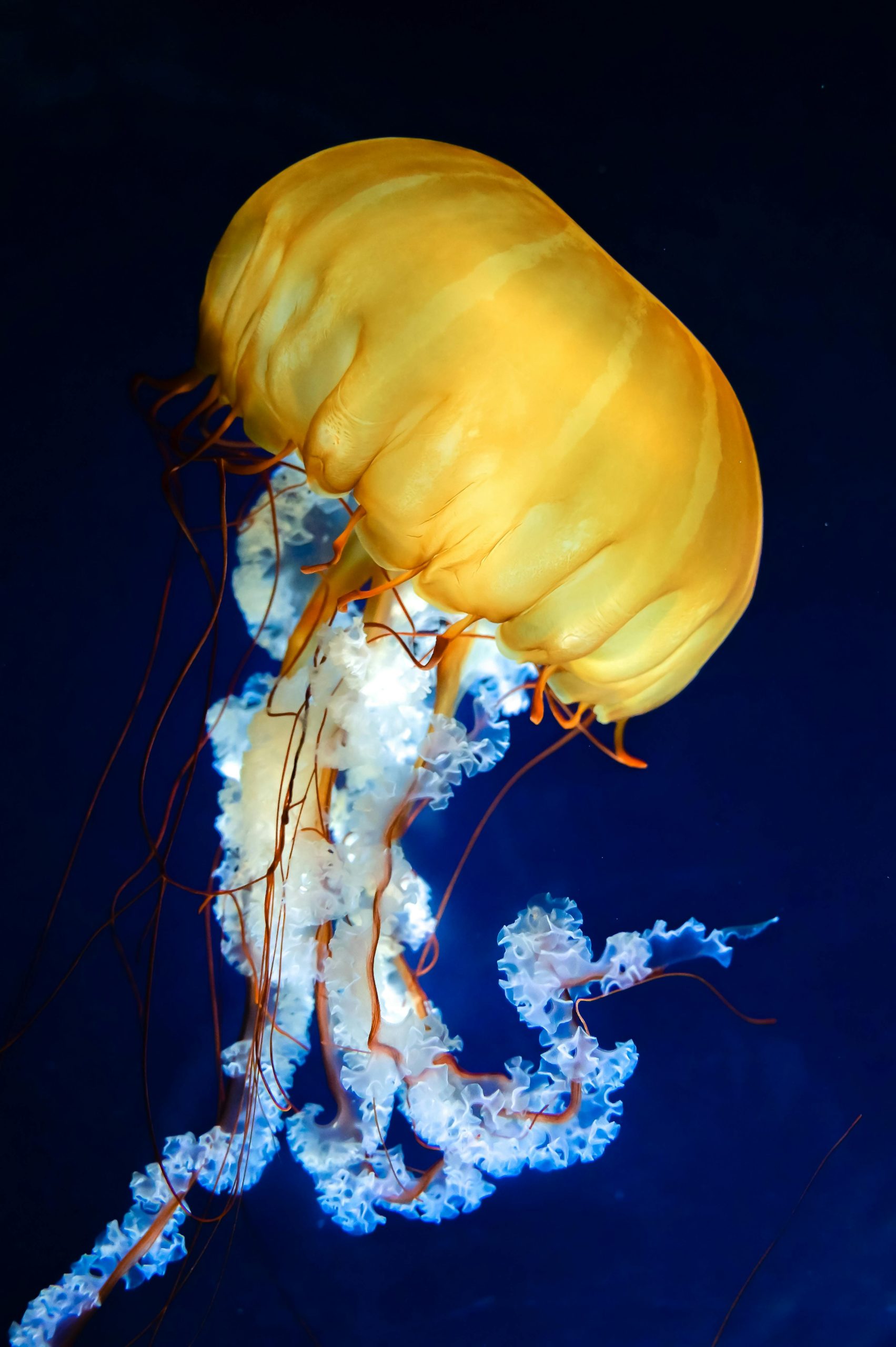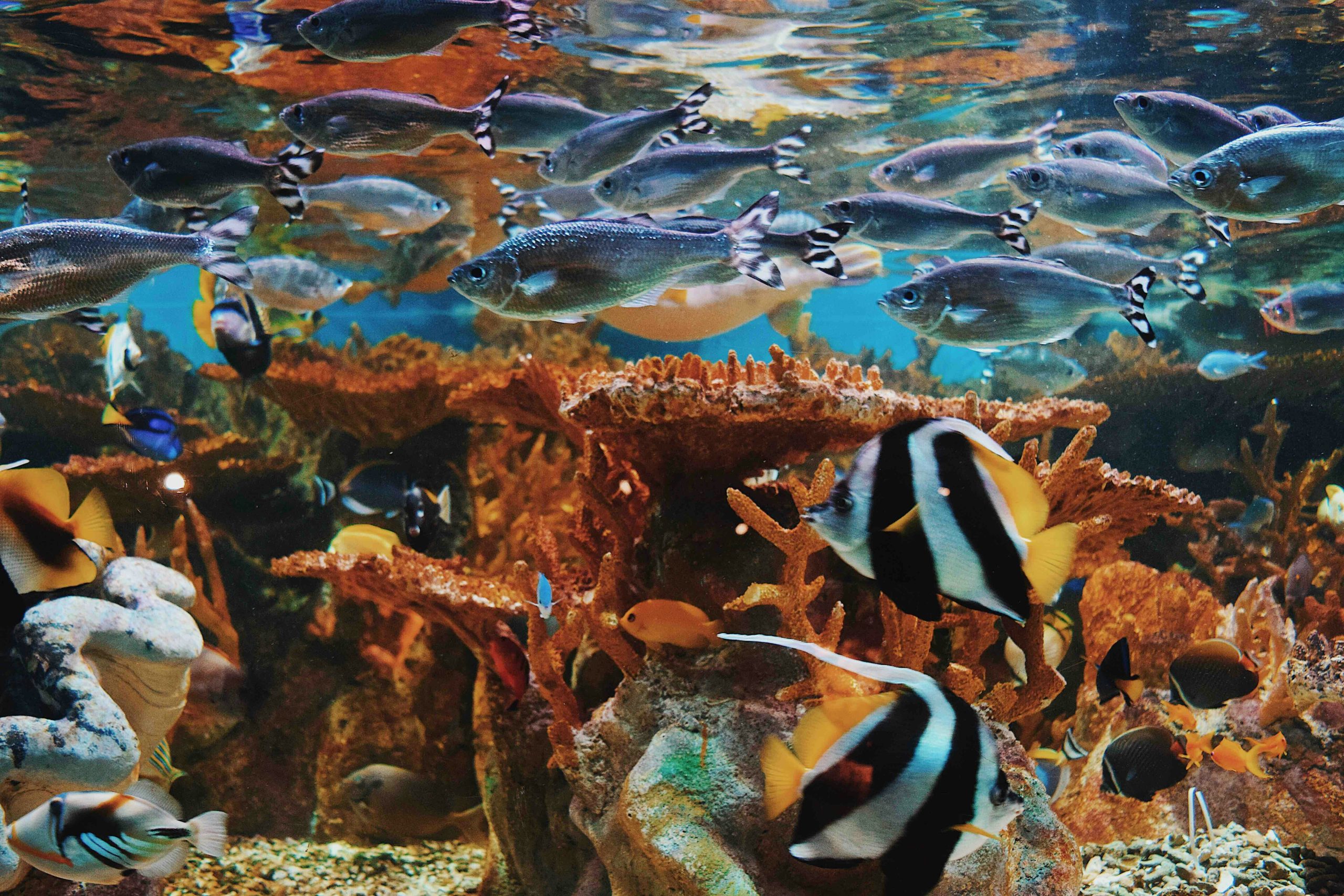Table of Contents
![]()
Bioluminescence is a captivating natural phenomenon where living organisms produce light through a biochemical reaction. This light-emitting ability, found in a diverse array of organisms, plays crucial roles in their survival and has piqued scientific interest for various applications. From the mysterious depths of the ocean to the shimmering dance of fireflies on warm summer nights, bioluminescence offers a glimpse into nature’s remarkable ingenuity.
The Science Behind Bioluminescence
At its core, bioluminescence involves a complex biochemical process. The reaction requires two primary components: luciferin and luciferase. Luciferin is a light-emitting molecule that, when oxidized, produces light. The enzyme luciferase catalyzes this oxidation reaction, facilitating the conversion of chemical energy into visible light. This process occurs in specialized cells or organelles within bioluminescent organisms.
The color and intensity of the emitted light vary widely among species. Most marine organisms produce blue or green light, as these colors travel the farthest in water. In contrast, terrestrial bioluminescence often results in yellow or orange hues. The duration and intensity of the light can also vary, influencing its effectiveness in communication, predation, or defense.
Biological Diversity of Bioluminescent Organisms
Bioluminescence is most commonly observed in marine environments, where it serves a range of ecological functions. Deep-sea organisms like the anglerfish utilize bioluminescence to attract prey. The anglerfish possesses a luminescent lure on its head, which it wiggles to draw unsuspecting prey closer. In the deep sea, where sunlight is scarce, bioluminescence helps these creatures navigate and communicate.
Surface-dwelling marine organisms, such as dinoflagellates, create stunning displays of bioluminescence when disturbed, causing the ocean to sparkle with a blue glow. This phenomenon, often seen in coastal waters, results from the dinoflagellates’ bioluminescent reaction, which serves as a defense mechanism by startling predators and attracting larger predators that may prey on the smaller ones.
Terrestrial bioluminescence is exemplified by fireflies, whose light patterns are integral to their mating rituals. Each species of firefly has a unique pattern of flashes that helps males and females identify and locate each other. In addition to fireflies, bioluminescent fungi, which glow in the dark forest undergrowth, play an important role in their ecosystem by attracting insects that help disperse their spores.
Ecological and Behavioral Roles
Bioluminescence serves several essential ecological functions. In terms of predation and defense, bioluminescent organisms use light to their advantage. For instance, counter-illumination is a technique where organisms produce light to match the brightness of the sea surface, making them less visible from below. This form of camouflage helps them avoid predators.
In some cases, bioluminescence is used to attract prey. The anglerfish’s bioluminescent lure is a prime example of this strategy. Similarly, certain squid species use bioluminescent organs to create deceptive displays that lure smaller fish within striking distance.
Communication is another vital role of bioluminescence. Fireflies are renowned for their intricate light displays used during mating rituals. Each species has a specific pattern and timing for its flashes, which helps them find suitable mates. In marine environments, bioluminescence can also facilitate social interactions among species, such as coordinating group movements or attracting mates.
Navigation is an additional role of bioluminescence. Some marine organisms use light to navigate the dark ocean depths, while others use bioluminescence as a beacon to locate specific habitats or partners.
Bioluminescence in Research and Technology
The study of bioluminescence has led to significant advancements in various fields. In medicine, bioluminescent imaging techniques are employed to track and visualize biological processes in real time. Researchers use bioluminescent markers to study gene expression, monitor cellular activities, and develop new therapies.
Environmental monitoring has also benefited from bioluminescence. Scientists use bioluminescent indicators to detect pollution levels and assess ecosystem health. For instance, certain bioluminescent bacteria can be employed to measure toxicity levels in water, offering a sensitive and non-invasive method for environmental assessment.
Biotechnology has leveraged bioluminescence to develop innovative tools. Bioluminescent biosensors are used in various applications, including detecting contaminants, monitoring chemical reactions, and studying biological systems. Advances in synthetic biology have enabled scientists to engineer organisms with tailored bioluminescent properties, opening new avenues for research and industrial applications.
Fascinating Examples and Case Studies
Several examples highlight the extraordinary nature of bioluminescence. The deep-sea anglerfish, with its bioluminescent lure, provides a striking example of predatory adaptation. Its light-producing organ, or esca, attracts prey towards its jaws, showcasing a sophisticated evolutionary strategy for survival.
Fireflies offer another captivating case. Their bioluminescent mating signals involve complex patterns of light flashes, which vary among species. The timing and sequence of these flashes are crucial for successful mating, illustrating the role of bioluminescence in communication.
The bioluminescent bay in Vieques, Puerto Rico, also known as Mosquito Bay, is renowned for its vibrant bioluminescent displays. The phenomenon occurs due to the high concentration of bioluminescent dinoflagellates in the water, which emit light when disturbed. Environmental changes, such as pollution and habitat alteration, can impact this natural spectacle, highlighting the need for conservation efforts.
Conservation and Future Directions
Bioluminescent species face various threats, including habitat destruction, pollution, and climate change. Protecting these organisms requires preserving their natural environments and mitigating human impacts. Conservation efforts should focus on safeguarding marine and terrestrial ecosystems, promoting sustainable research practices, and addressing environmental challenges.
Future research holds promise for new discoveries and innovations. Scientists continue to explore the applications of bioluminescence in medicine, environmental monitoring, and biotechnology. Ongoing advancements in understanding bioluminescent processes may lead to novel solutions and technologies that benefit both science and society.
Conclusion
Bioluminescence is a remarkable and multifaceted phenomenon that illuminates the natural world in extraordinary ways. From the depths of the ocean to the forest floor, bioluminescent organisms use light for survival, communication, and adaptation. The study of bioluminescence not only enhances our understanding of these organisms but also offers valuable insights and applications across various scientific and technological fields. As research continues, the fascination with bioluminescence will undoubtedly unveil new wonders and possibilities.
Share This





Be the first to comment